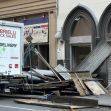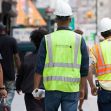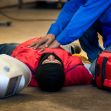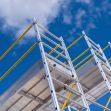New York’s scaffold law is under attack. A coalition of business and industry groups have banded together and are urging Governor Cuomo to ask for a repeal of the law in his budget proposal to the legislature. Meanwhile, bills to overturn the law have already been introduced in the New York State Assembly as well as the U.S. Congress. What is this 135-year-old law, and why have building owners and contractors set their sights on tearing it down, demolishing it, and sending the scaffold law to the scrap heap?
What Is the Scaffold Law?
New York Labor Law Section 240 (1) requires all building contractors and owners (except for owners of one and two-family dwellings who contract for but do not direct or control the work) to provide scaffolds, ladders, hoists, pulleys, ropes and other devices to give proper protection to persons employed in certain construction-related activities, specifically erection, demolition, repairing, altering, painting, cleaning or pointing of a building or structure. Section 241 of the Labor Law provides more detailed requirements regarding planking lower floors, shafts and open spaces, and making sure all work performed is arranged “as to provide reasonable and adequate protection and safety to the persons employed therein or lawfully frequenting such places.”
Taken together, sections 240(1) and 241 comprise New York’s so-called scaffold law, although the laws apply to any type of accident that occurs due to working from heights and not just scaffold collapses, such as ladder falls, open shafts or unplanked floors, or any elevation-related or gravity-related injury, such as being struck by an object falling from above.
Critics Challenge the Scaffold Law’s Imposition of Absolute Liability on Contractors
Because of the scaffold law, owners and contractors are “absolutely liable” for elevation and gravity-related injuries that occur on the job if the contractor did not provide adequate protection; there is no inquiry into whether the employee or a co-worker was negligent or even partially to blame. The statute itself does not expressly include any mention of absolute liability, but this is the way the law has been interpreted by judges in scaffold law cases.
Critics of the law, such as the Associated Builders and Contractors and other business groups and representatives of the construction industry, are pushing New York to repeal the 135-year-old law, calling it “outdated,” “obsolete,” and, to be blunt, “stupid.” These groups are pressuring Governor Cuomo to include a repeal of the law in his executive budget.
At the same time, New York legislators from the statehouse to Capitol Hill have introduced measures to replace the scaffold law’s “absolute liability” with “comparative negligence.” Under a comparative negligence standard, juries would consider whether the employee’s own negligence caused or contributed to the accident. Any percentage of negligence assigned to the employee would reduce the worker’s damages award proportionately. For instance, if the worker suffered $10,000 in damages but was found to be 20% at fault, the employee could only recover 80%, or $8,000. Also, because New York follows “pure” comparative negligence, an injury victim who was more than 50% could still recover. For example, if instead of being 20% to blame for the accident, the worker was 80% at fault, he or she could still recover 20% of damages, or $2,000 in the above example.
A measure to replace absolute liability with comparative negligence has already been advanced in the state legislature. Earlier this year, A03737 was introduced in the New York State Assembly by Assemblymember John T. McDonald, III, whose district covers parts of Albany, Rensselaer, Waterford,
Cohoes and Troy. This bill would amend New York’s Civil Practice Law & Rules (CPLR) Section 1411. CPLR 1411 is where you can find the comparative negligence standard which applies to other civil actions for personal injury. A03737 would specifically apply CPLR 1411 to scaffold law cases, effectively overruling judicial pronouncements of absolute liability.
Another upstate New York legislator put forth another bill to repeal the Scaffold Law, this time in the U.S. Congress, Representative Chris Jacobs, representing an area between Buffalo and Rochester on the Canadian border, introduced HR8222 on September 11, 2020. This bill, dubbed the Infrastructure Expansion Act of 2020, prohibits absolute liability from applying to elevation- or gravity-related risks on any federally funded construction project. Instead, the state’s applicable comparative negligence standard would apply. Given that New York is the only state in the union to have a scaffold law in place, this federal law would only affect New York State (Illinois was the only other state to have such a law in modern times, but the Prairie State repealed its version of the scaffold law, the Illinois Structural Work Act, in 1995).
What Will the Future Hold for New York Construction Workers Injured on the Job?
Like its state-level companion, HR8222 has been referred to the House Judiciary Committee. Both bills are in their infancy in terms of their stage of the legislative process. Whether either bill advances out of committee, let alone makes it through the arduous process of becoming a law, remains an open question. Meanwhile, business and industry groups are primed to keep up their pressure campaign at the Governor’s mansion for action from the executive level. Absent any changes, New York construction workers continue to occupy a unique position in the landscape of construction law and tort liability in New York and nationwide, with strong protections for worker safety and a high level of responsibility for owners and contractors.






